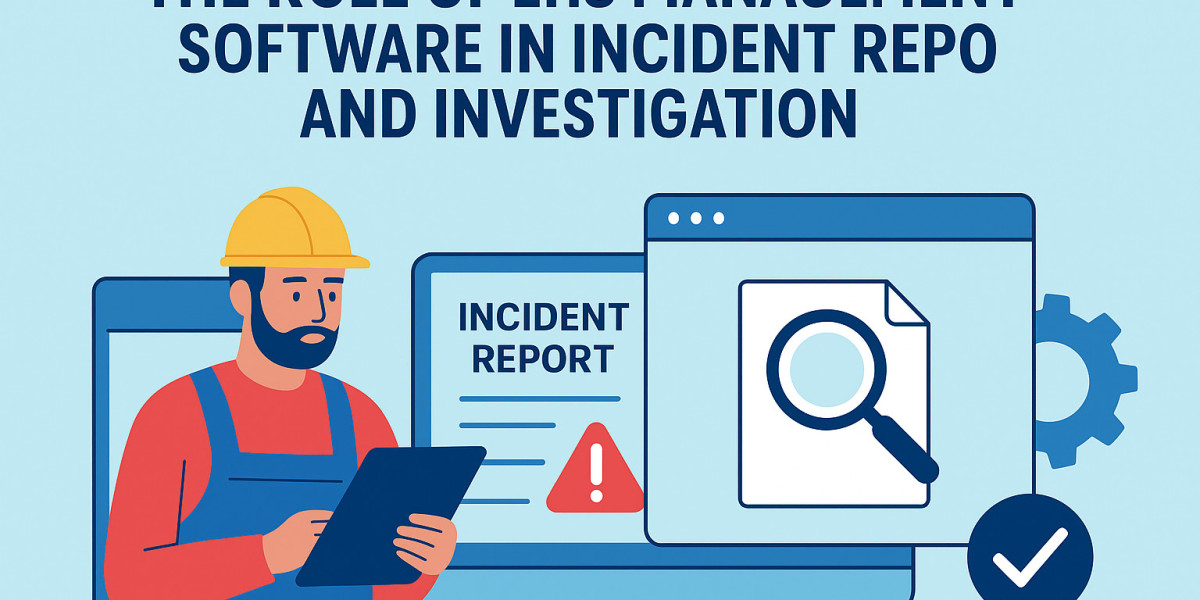How EHS management software transforms incident visibility
Capturing incidents in real time
Incident reporting has evolved significantly with the adoption of EHS management software. Instead of relying on paper-based systems or delayed manual entries, organizations can now capture incidents in real time. This immediate recording ensures that critical details such as location, time, and context are preserved accurately, providing a strong foundation for effective investigation.
Enabling proactive incident response
The strength of EHS management software lies in its ability to provide organizations with instant visibility into safety events. By consolidating incident reports in a centralized platform, leaders can initiate corrective actions quickly, reducing potential risks and safeguarding employee health while maintaining compliance across regions.
Linking EHS management system workflows to incident investigation
Streamlining data collection and categorization
An EHS management system enhances incident investigations by structuring workflows for data collection and categorization. Instead of fragmented documentation, companies gain access to standardized formats that simplify root cause analysis and ensure regulatory alignment.
Automating investigation assignments
With an integrated EHS management system, investigation tasks can be automatically assigned to the right individuals or teams based on expertise and regulatory needs. This reduces delays and ensures that every incident receives timely and qualified attention.
Leveraging EHS safety software for root cause analysis
Identifying patterns and recurring issues
EHS safety software enables businesses to move beyond superficial fixes by identifying patterns in incident data. Through analytics dashboards and trend reports, organizations can pinpoint recurring hazards and address systemic weaknesses, ultimately reducing future incidents.
Supporting corrective and preventive actions
The ability of EHS safety software to link findings to corrective and preventive actions enhances the overall incident investigation process. By ensuring that lessons learned from past incidents are applied across the organization, companies can build a culture of continuous improvement in workplace safety.
The role of EHS management software in regulatory compliance
Meeting global compliance expectations
For life sciences and manufacturing companies operating across multiple geographies, regulatory compliance is a non-negotiable. EHS management software simplifies compliance by aligning incident reporting workflows with regional requirements, whether it be OSHA in the US or ISO standards globally.
Audit readiness and transparent reporting
An additional advantage of EHS management software is its ability to generate audit-ready reports. Incident investigations can be documented with full traceability, making it easier to demonstrate compliance during regulatory inspections and avoiding costly penalties.
Integrating the EHS management system with enterprise platforms
Connecting quality, safety, and risk management
An EHS management system does not operate in isolation. By integrating with broader enterprise systems such as PLM, QMS, and SRM, it ensures that incident data informs decision-making across product development, supplier quality, and operational risk management.
Driving collaboration across functions
Integration also facilitates cross-functional collaboration. Quality managers, regulatory affairs teams, and safety officers can all access the same incident data through the EHS management system, ensuring alignment and reducing silos that slow down investigations.
Enhancing workforce engagement through EHS safety software
Empowering employees to report incidents
EHS safety software improves employee engagement by simplifying the reporting process. Mobile-enabled reporting allows workers to capture incidents or near-misses instantly, removing barriers and fostering a proactive safety culture across plants and facilities.
Building trust through transparent investigation
By making investigation outcomes visible through EHS safety software, organizations build trust with employees. Workers feel confident that their concerns are taken seriously, encouraging continued reporting and strengthening overall safety performance.
Leveraging analytics in EHS management software for deeper insights
Data-driven decision-making
EHS management software provides advanced analytics capabilities that transform raw incident data into actionable insights. Leaders can track trends across multiple sites, benchmark performance, and prioritize high-risk areas for intervention.
Predictive risk modeling
Beyond descriptive analytics, some EHS management software platforms now integrate predictive modeling. By using historical incident data, companies can forecast potential hazards, proactively implement controls, and reduce the likelihood of future incidents.
Case examples of incident reporting and investigation success
A pharmaceutical company strengthens safety compliance
A leading pharmaceutical company implemented EHS management software to manage incident reporting across multiple facilities. By using an integrated EHS management system, the organization reduced reporting delays, ensured accurate investigation documentation, and achieved stronger compliance outcomes in FDA audits.
An aerospace manufacturer reduces investigation cycle times
An aerospace and defense company deployed EHS safety software to improve root cause analysis. The platform identified recurring supplier-related issues, allowing the business to enforce corrective actions upstream. This not only reduced incident recurrence but also shortened investigation cycle times by 30%.
Future of incident management with EHS management software
AI-driven incident classification
As technology evolves, EHS management software will leverage artificial intelligence to classify incidents automatically based on severity and category. This innovation will accelerate investigations and help organizations allocate resources more effectively.
Cloud-enabled global scalability
For global enterprises, cloud-based EHS management software offers scalability that ensures consistent incident reporting and investigation processes across multiple regions. This creates a unified view of global safety performance and supports strategic decision-making.
Conclusion: Why ComplianceQuest is essential in 2025
Incident reporting and investigation form the foundation of workplace safety and regulatory compliance. With the rising complexity of operations in life sciences and manufacturing, adopting EHS management software has become indispensable. By unifying reporting, investigation, analytics, and compliance, organizations reduce risks and build safer, more resilient operations. In 2025, ComplianceQuest stands out as the essential partner for businesses, offering a comprehensive EHS management system and EHS safety software that empowers organizations to not only manage incidents effectively but also drive continuous improvement, protect employees, and ensure sustainable growth in an increasingly competitive landscape.



